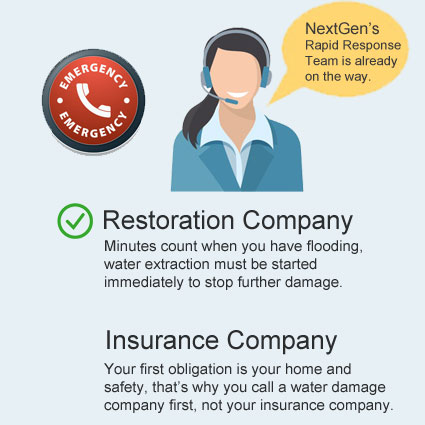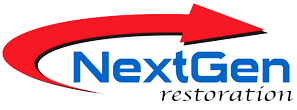Cleaning up sewage from a toilet overflow or backup is extremely important due to potential health hazards.
Proper removal of sewage, extracting the water, proper drying, disinfecting and in-depth cleaning is essential.

Sewage Cleanup and Water Damage
We would all agree that cleaning up after a toilet overflows has to be the worst. Not all water damage incidents are the same however. Did you know that the water from water damage is actually categorized? The scary part is even clean category 1 water can quickly become category 3, which is toxic. A professional can handle the cleanup and restore your home, no mater how bad it looks right now.
Below are the categories of water you should be familiar with.
CATEGORY 1
Clean Water
Clean water is usually the result of a broken pipe, broken water line to the washer or overflowing bathtub. It’s not dangerous to begin with but within 48 hours it can turn into category 2 water.
CATEGORY 2
Grey Water
Grey water is considered contaminated, but does not contain fecal matter and could be the result of waste water from showers, dishwashers or sinks. Grey water can become black water if not cleaned up in 48 hours.
CATEGORY 3
Black Water
Black water is hazardous and contains disease causing toxins and microorganisms. Usually a result of a flood or water that contains raw sewage from an overflowing toilet. Both category 1 and 2 water can quickly become category 3.
Professional Emergency Services
If you have a sewage backup or toilet overflow, call us immediately, our emergency response team is available 24 hrs a day and will quickly be dispatched to your location. We have the necessary equipment to safely and efficiently extract the water and clean the area to limit further damage to surrounding areas. After the standing water has been removed, we thoroughly clean and sanitize your bathroom before repairing any water damage.
Licensed & Certified • Residential & Commercial • Bonded & Insured • 24-Hour Emergency Service
Do I call insurance first or water damage company?
When it comes to water damage the first priority is to stop the water flow and start removing the standing water, this is called water mitigation process. A professional restoration company has the equipment and the expertise to quickly extract the water and limit the amount of water that is seeping into your walls and flooring which is causing further damage to the area.
Insurance is important but first take care of the emergency and call in an expert who can handle the situation.
But don’t I need a claim first?
No, you are required by your insurance company to limit the damage to the best of your ability. We are experienced in the insurance process and can help, in fact one of our first steps is to document the damage professionally for your insurance company. We know what they need to process your claim.

How to Stop Overflowing Toilet:
- Step 1: Remove the back lid from the toilet tank and set it aside.
- Step 2: Reach inside the tank and push the flapper valve down. This should stop additional water from flowing into the toilet bowl.
- Step 3: Lift the float to stop the tank fill valve from filling the tank. With the toilet tank’s main water supply blocked, you should see the toilet bowl water start to go down. After a few minutes, you can release the float.
- Step 4: If the water does not stop filling in the toilet bowl, keep a hold on the float and turn off the water to the toilet. You should have a water valve located behind the toilet near the floor, turn to the right in clockwise direction.
Note: If a line is broken or water continues, closing the door and stuffing a towel under it can help in minimizing the amount of water that escapes into the adjoining room.


